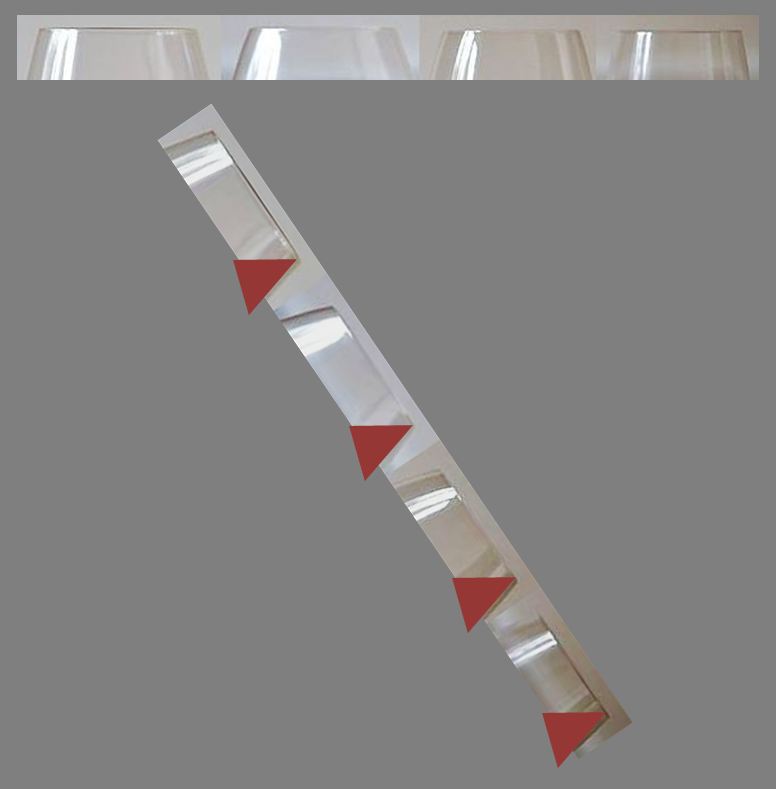Only brief unscientific notes but a basic impression of how a wine glass may affect a specific wine…
Riedel Vinum Burgundy - perhaps, unsurprisingly, gives the impression of heat the most but also conveys the more floral elements in this wine. The wine seems soft and flabby with lots of sweetness showing too and a distinct lack of garrigue & spice. Tempers the acidity and comes across as slightly stewed. 89pts
Riedel Vinum Syrah / Shiraz - the alcohol is less prominent in this and the nose is beautifully poised. Pure, delicious and delightfully balanced. The fruit comes across as slightly richer/brighter/younger with lots of finesse with a touch more meaty density. Illustrates the herbal/spice notes to perfection. Easily my favourite glass of the night. 94pts
Riedel Vinum Chianti / Riesling - similar to the Syrah but the wine seems less sweet and dryer/tannic with much persistence. Some good meaty aspects here with good spicy notes. Overall the wine was nicely presented but lacked personality although the wines perfume showed remarkable well here. Certainly the best glass for general mix of wines. 91pts
Schott Zwiesel Pure Burgundy - the wine come across as a stewed mess after 15 minutes. Disjointed and unbalanced. I can imaging anyone drinking this wine from this massive bowl would be disappointed - to hot, flabby and sweet. No garrigue here either and the least successful glass for this wine. The acidity is non-existent here. 85pts

Left to right… Riedel Vinum Burgundy, Schott Zwiesel Pure Burgundy, Riedel Vinum Syrah/Shiraz, Riedel Vinum Chianti/Riesling
